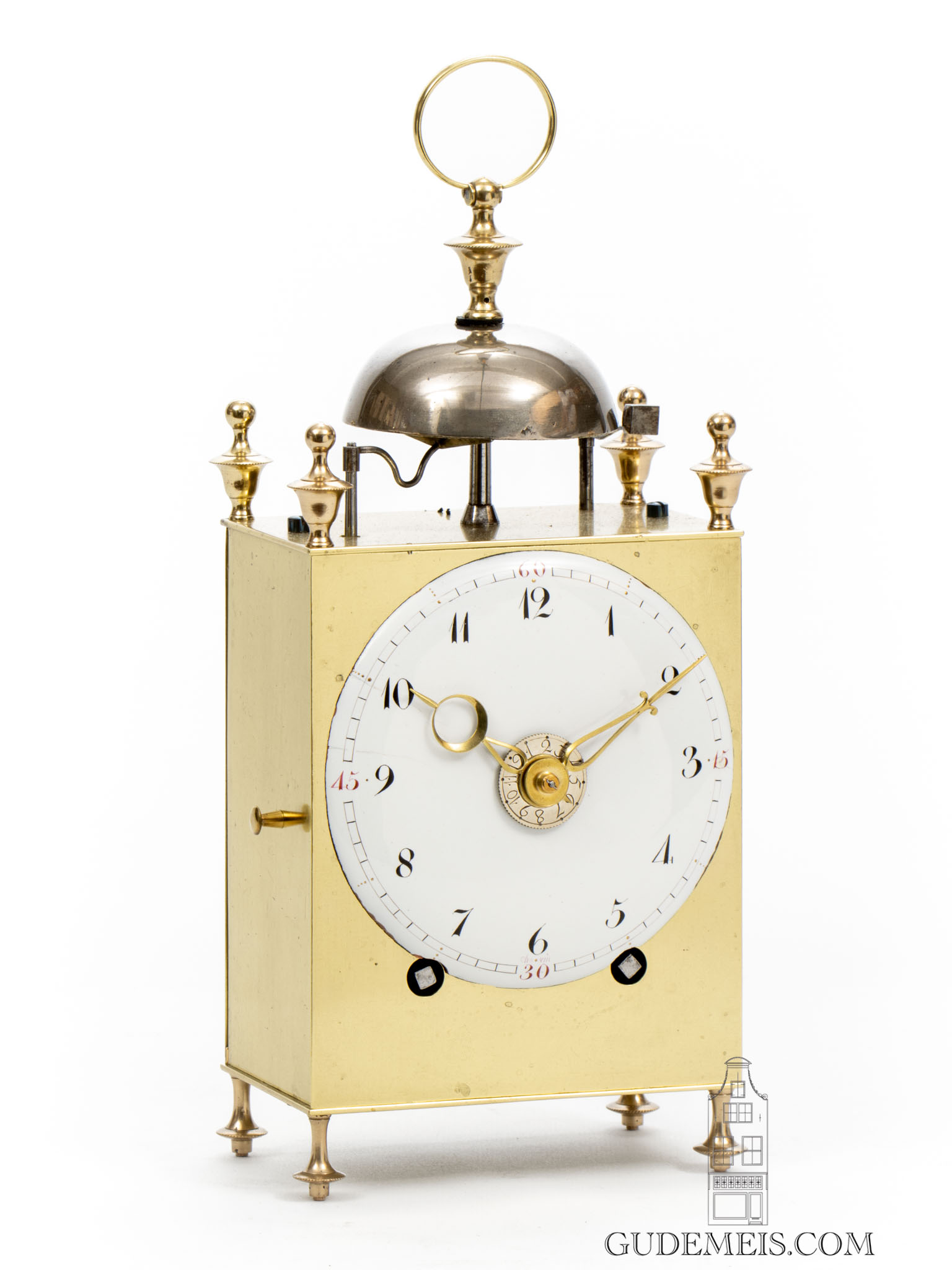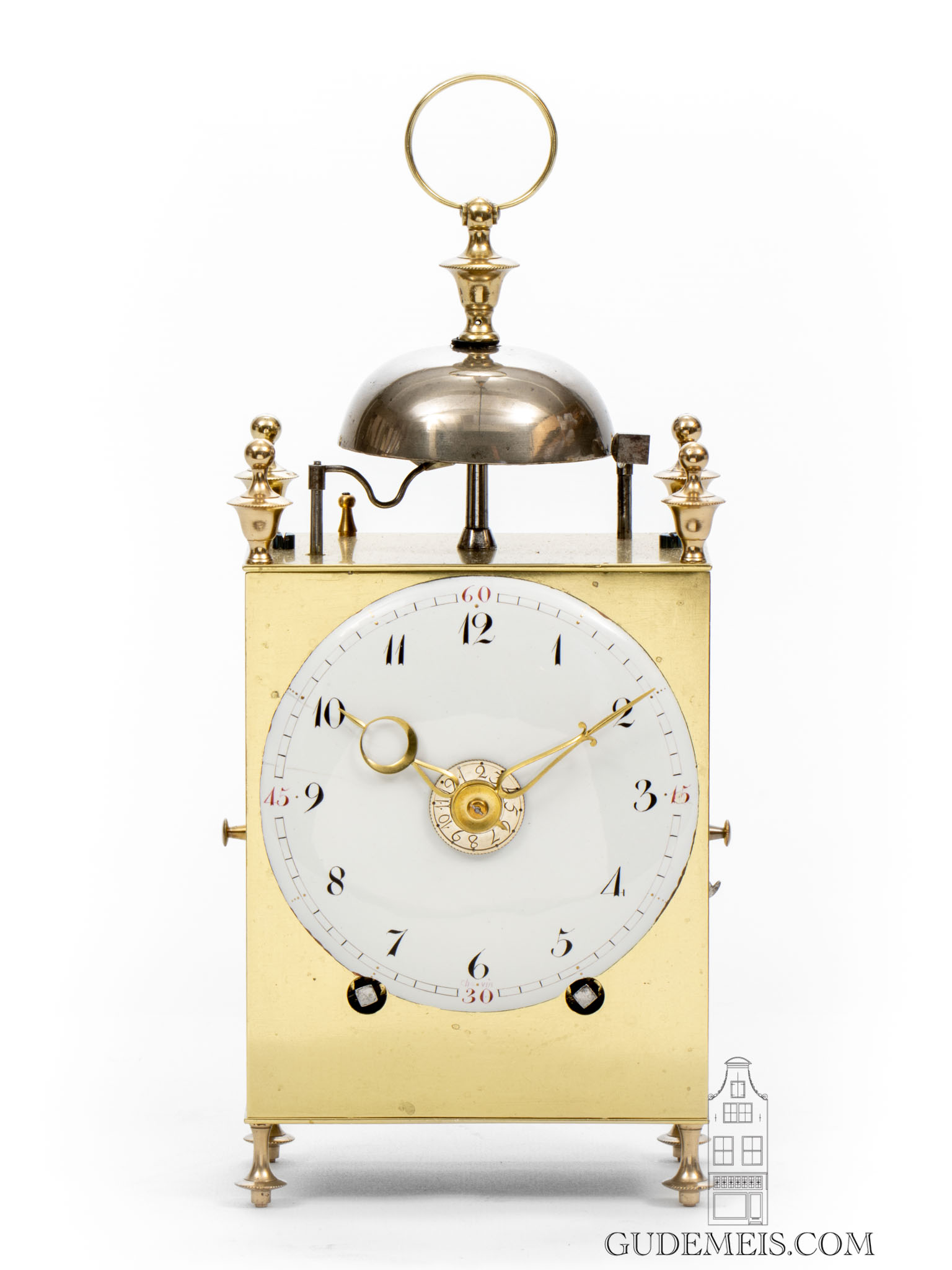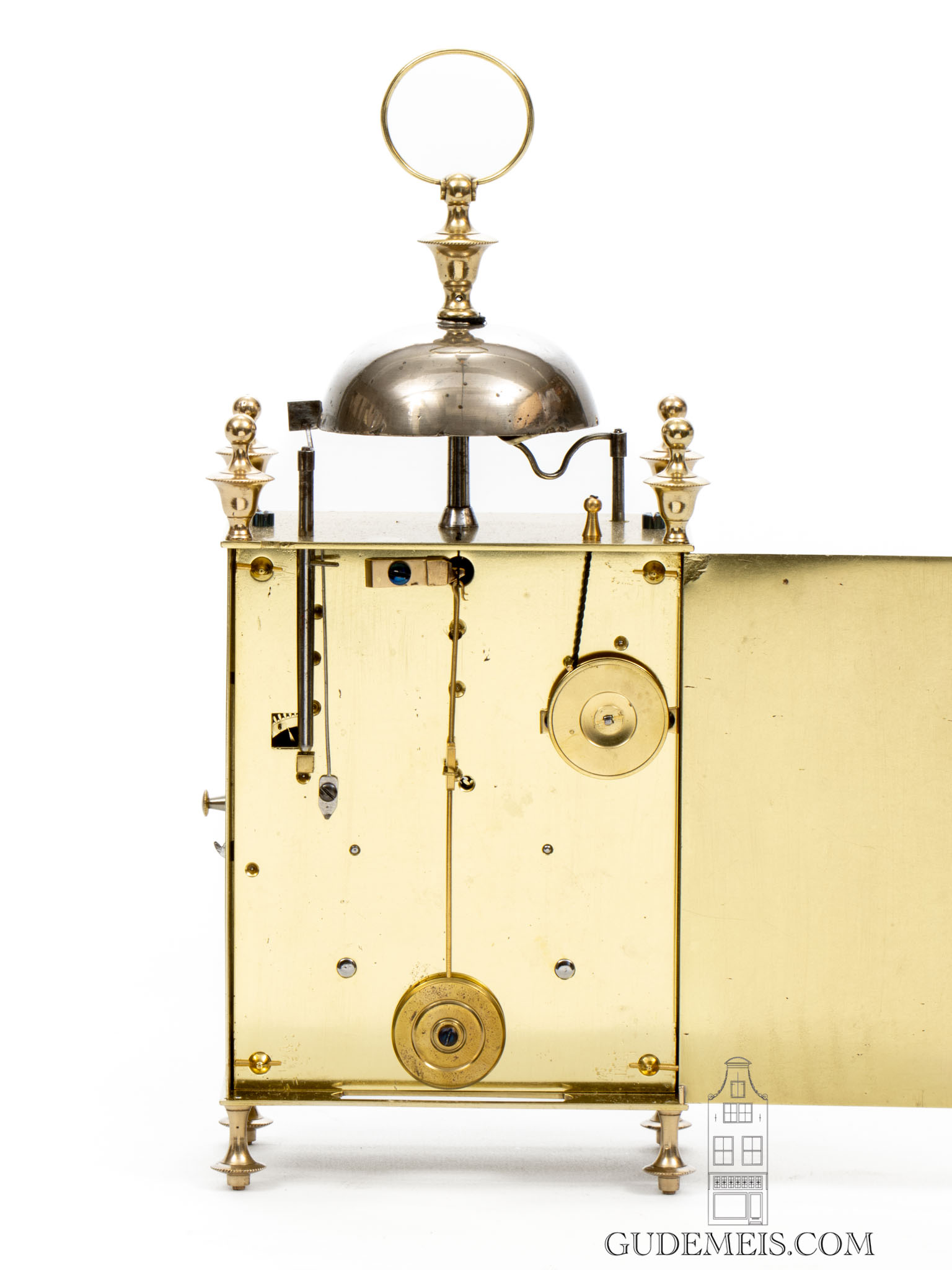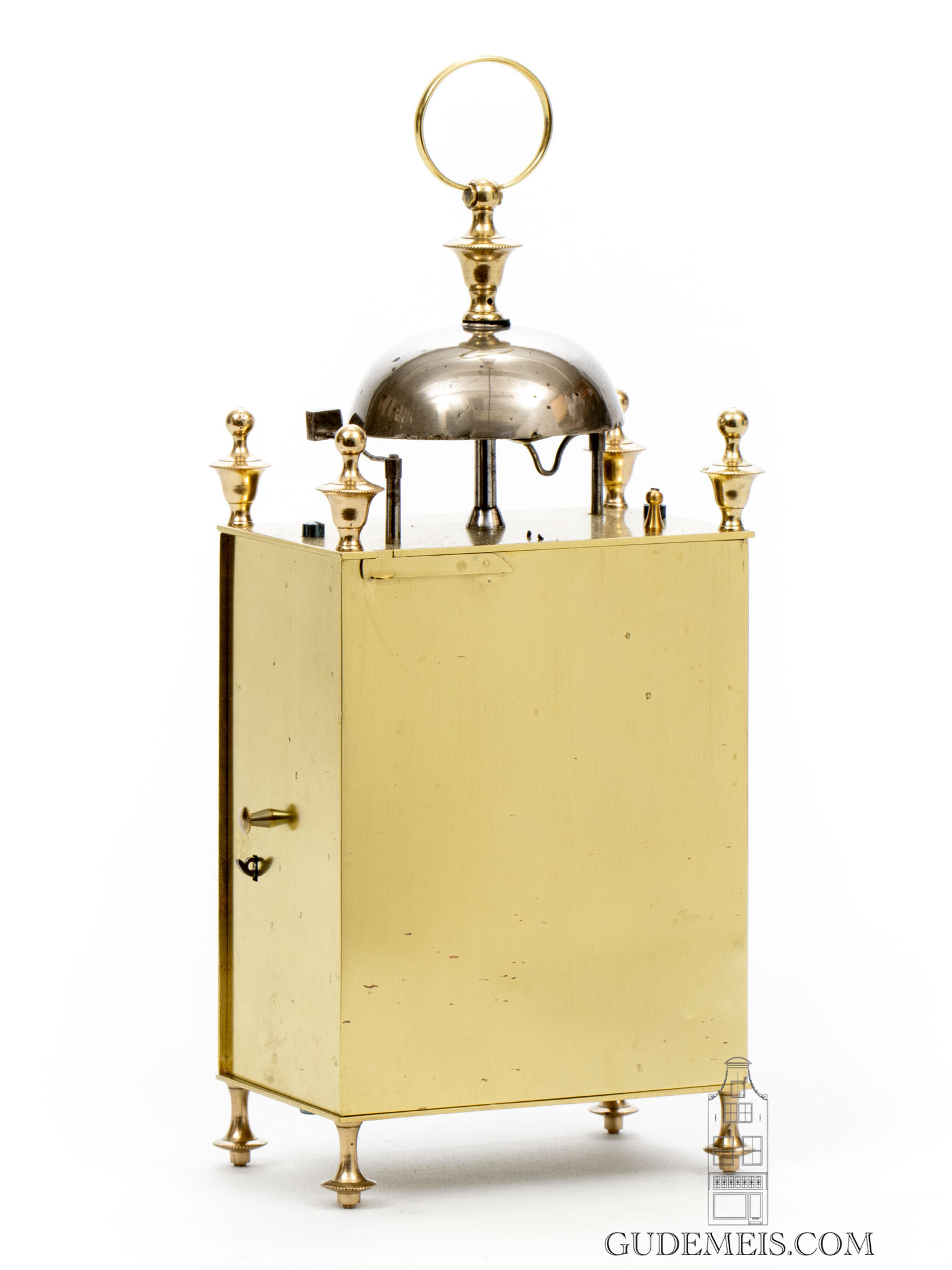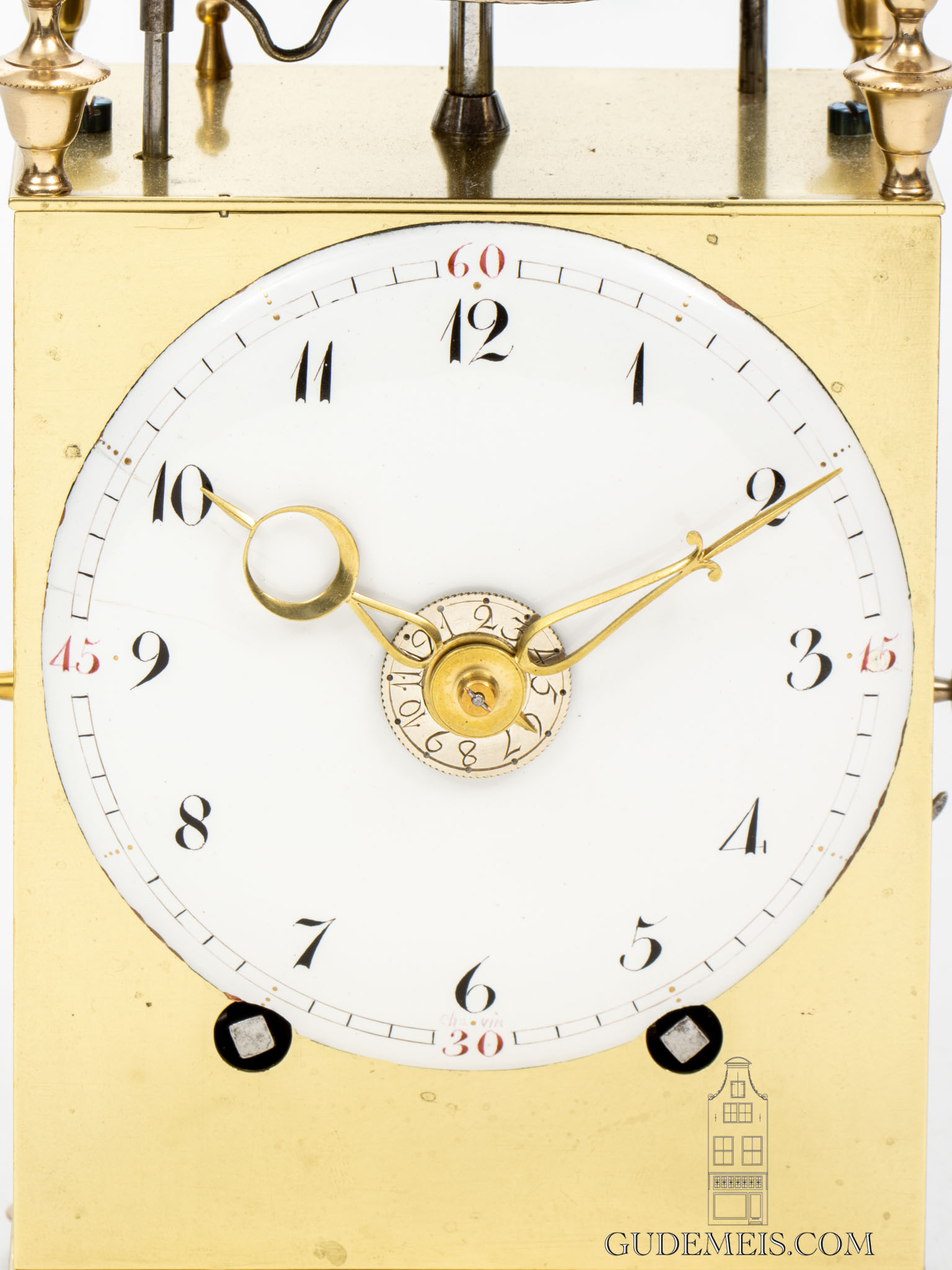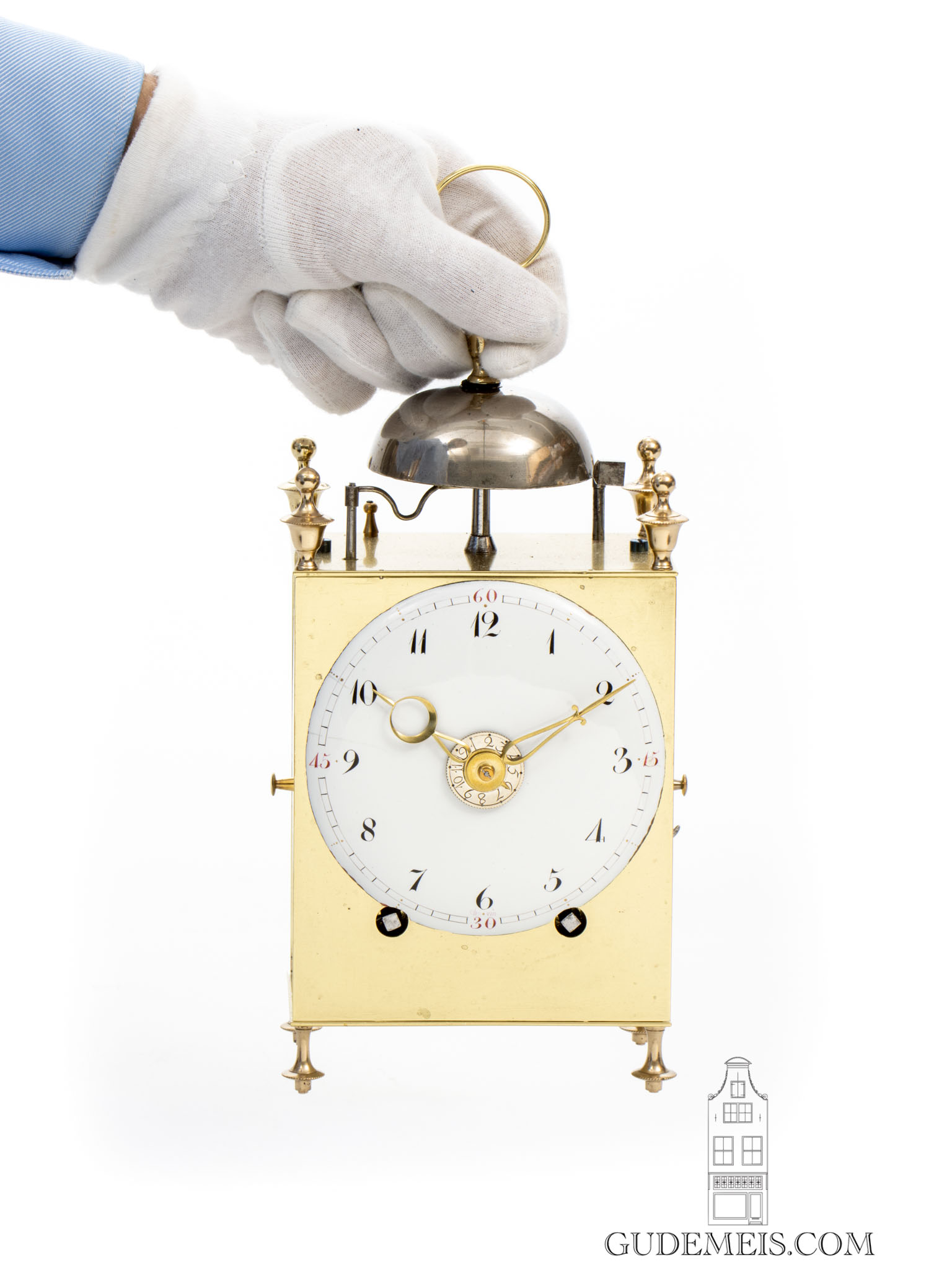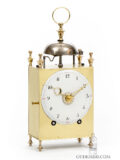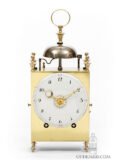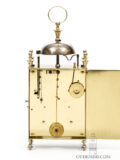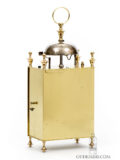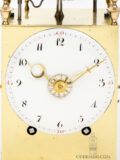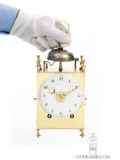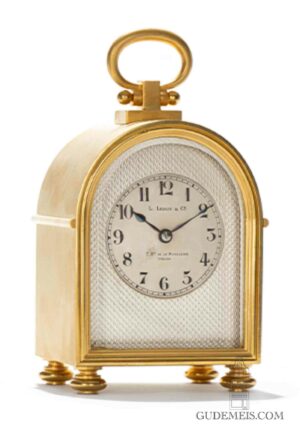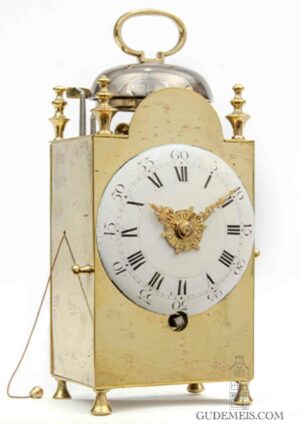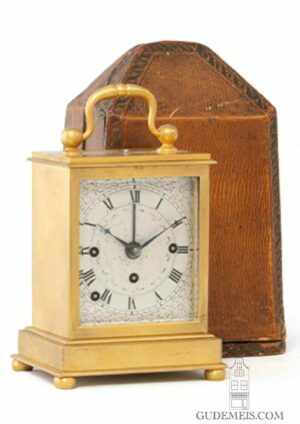An early French brass Capucine travel clock with striking, repeat and alarm, circa 1790
Description
Capucine
In the last quarter of the 18th century, travel clocks were still quite rare in France, although demand was growing. We can deduce this from the fact that production became more standardised compared to the previous period, when most clocks were made individually to order. There were roughly two variants. There were the so-called “pendules d’officier”, richly decorated clocks, often made of fire-gilded bronze or exotic wood, intended for the very wealthy. In addition, there was a group of more soberly designed travelling clocks, often with an un-gilded brass case, such as this example, which is referred to by the term “Capucine”. The name refers to the order of the Capucin monks but can be interpreted in two ways. One explanation is that the bell on this type of clock resembles the hoods of the cowls of the Capucine order. The other explanation, which seems more logical to me, seeks to compare the austere way of living of this order to the more austere ececution of these clocks. In any case, these clocks are attractive to many people because of their simplicity and are also easy to place in an interior. In addition, the solid movement with striking mechanism and repetition makes it a reliable and well-functioning clock.
Arabic numerals
The 10.5 cm enamel dial has Arabic chapters and red numerals for the quarter hours. The beautifully pierced hands are made of brass. The engraved brass alarm disc is silvered. One of the characteristics of the early Capucines is the absence of a bezel around the dial. Later Capucines do have a bezel, which becomes more wide during the development of these clocks.
Morbier striking
The movement is driven by two spring barrels and has a duration of over eight days. It is regulated by an anchor escapement in combination with a silk suspended pendulum. The clock has a half-hour rack striking on a bell. After striking the hour, this is repeated after a few minutes. We call this the Morbier strike. It gives people the opportunity to actively count how many times the clock strikes. The clock also has an alarm mechanism that functions on a small spring barrel with pull winding. On the side of the case is a lever that can be used to repeat the last hour struck. This repetition function was, of course, very useful at a time when it was not possible to simply turn on the light.
Brass case
The rectangular brass case has a bell on top which is surmounted by an urn finials with a carrying ring. There are four more urn finials on the corners. There are doors on the back and sides giving access to the movement and pendulum. The whole is raised on turned feet.
